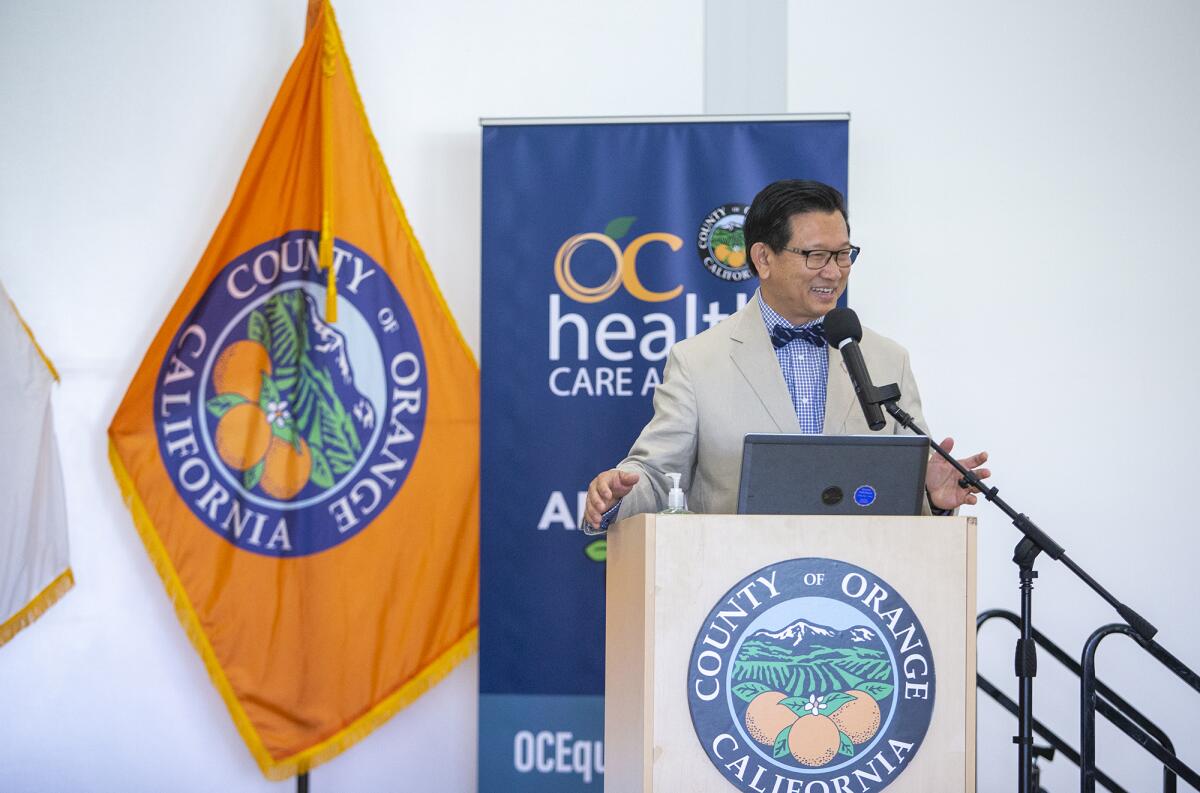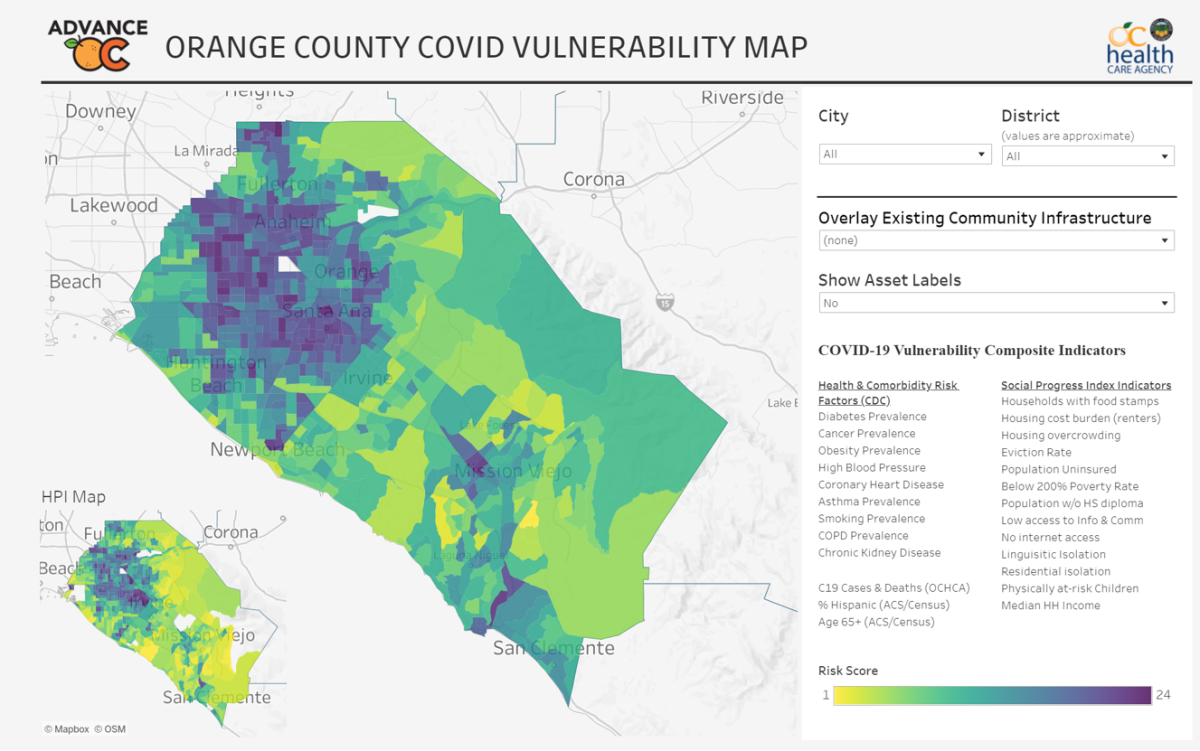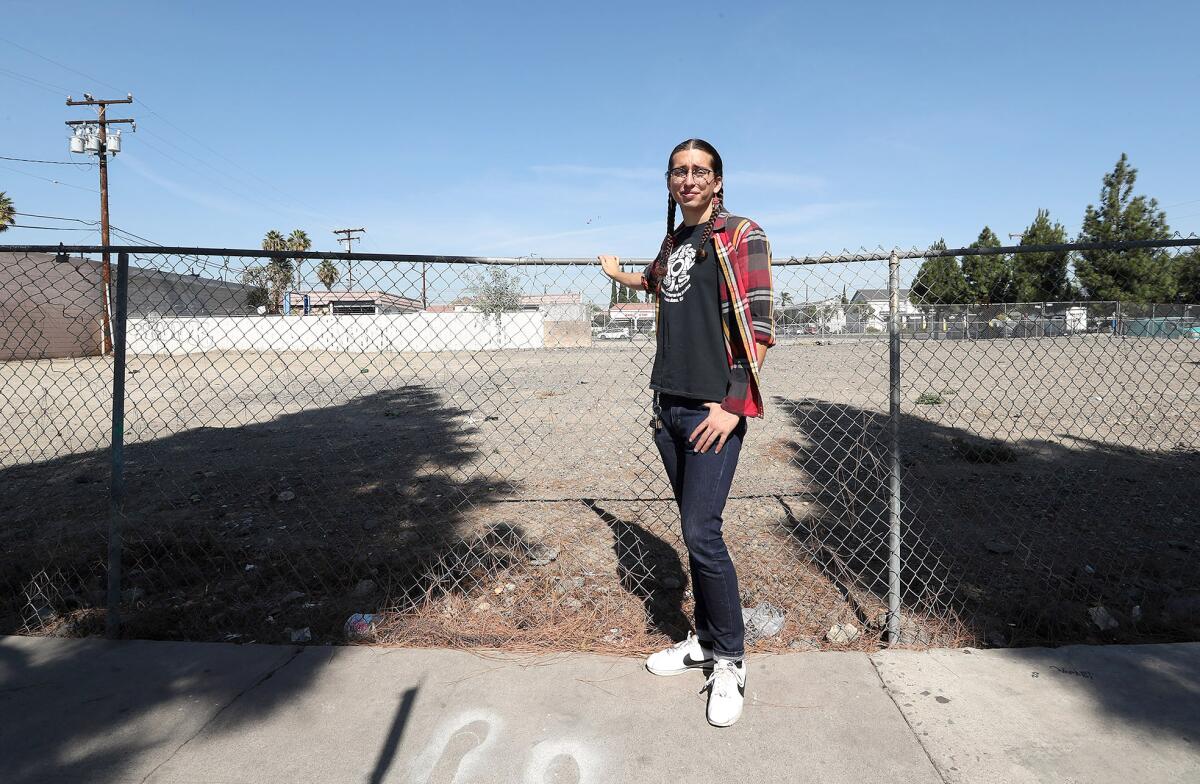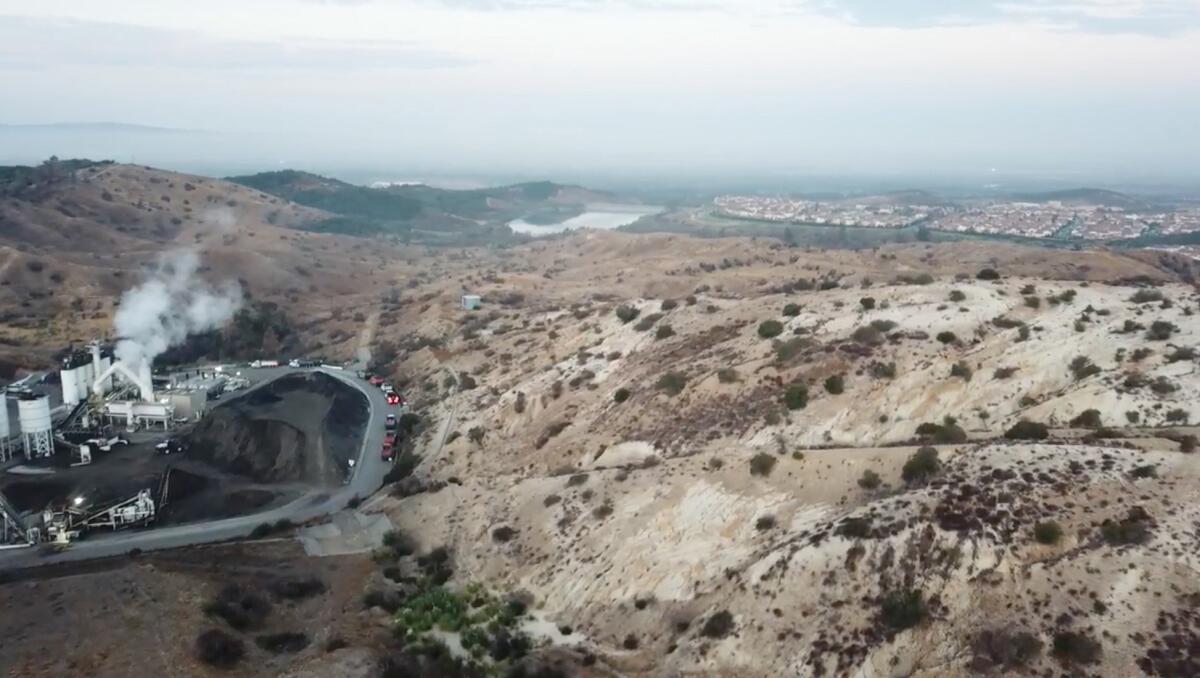Orange County forms task force to address health-equity issues

After the pandemic revealed and, officials say, worsened social and health inequities in the community, Orange County is moving forward with a task force to identify and reduce the long-standing disparities.
The move is part of the Equity in O.C. initiative, which began when the county partnered last year with a nonprofit to develop a map equity tool that shows which cities and neighborhoods are the most in need.
The Orange County Equity Map could allow the county, cities and nonprofits to better allocate resources to communities that suffer from issues such as poor education, hunger, substandard environmental conditions and lack of affordable housing.
âThe goal for us is really to support in laying the foundation for the Orange County community to address social determinants of health that are impacting health inequities,â Hieu Nguyen, director of the countyâs office of population health and equity, said this week. âIf weâre able to do all of that, then our vision is really to create a healthier, more resilient and equitable Orange County.â
Nguyen said that a $22.8-million COVID-19 grant from the Centers for Disease Control and Prevention has allowed the county to tackle health-equity issues in the community by expanding the county Health Care Agencyâs office of population health and equity and organizing the task force, which comprises local organizations and community members.
Nguyen said the grant has allowed him to add seven people to the countyâs office of population health and equity. Before those hires, Nguyen was the only member of the office, which started in December 2020.
âWeâre looking internally at our operational processes, and how we can align with our community and listen to our community voices to make sure that indeed weâre playing our part in addressing systemic inequities,â said Karin Kalk, director of project management and quality improvement at the agency. âThatâs not a small change for a big organization like ours.â
Since early February, task force members have been meeting twice a month to discuss the equity issues identified in Orange County. Within the next few months, the group will choose three issues to focus on.
Nguyen said itâs crucial to include the voices of the people in the community who have on-the-ground knowledge. Nguyen said that up to 270 people have attended the task force meetings at a time.
âOne of the beautiful things, and what weâre very intentional about with this Equity in O.C. initiative, is using a community-informed approach and a data-driven approach,â Nguyen said.

In June, the initiative will move to its âaction phase,â when community members and organizations will learn from local and national experts on how to implement strategies to work toward solving the equity issues they selected.
In the third phase, Nguyen said that the county will be evaluating and writing up what it learned during the two-year initiative. Even though the initiative is tied to the CDC grant, Nguyen said the county wants to make it a sustainable program.
âWhatâs really significant for us in this work is making sure that the table for the Equity in O.C. task force is inclusive of grassroots organizations and community-based organizations,â Nguyen said. âSo thereâs organizations that have not historically engaged in county processes who are there, including Viet Rainbow of Orange County, Alianza Translatinx and the United American Indian Involvement, Inc. organization.... So there is a broad base where thereâs the traditional community providers, different sectors and different systems, as well as the grassroots-level work.â
In addition to taking part in the task force and as part of the equity initiative, the county is offering four grant opportunities for organizations and community members.

Johnice Williams of Peer Voices of OC, an organization that advocates for the behavioral health community, said her group joined the task force this year, and itâs been gratifying to see the county listening to community voices.
Mario Ortega of Abrazar, an organization that helps low-income seniors and families especially in the Latino and Vietnamese communities, said the county has been showing an unprecedented amount of commitment to achieving health equity since the pandemic worsened and brought to light the health inequities in Orange County.

Ortega specifically pointed to the community grants as something he has never seen before at such a âwide scale.â He also said the diversity of the groups and community members in the task force is extensive.
âThrough the pandemic, itâs shown that thereâs so much need out there,â Ortega said. âThe pandemic exasperated all the inequities that we know existed. But itâs also brought together a willingness for partners and agencies to work together collaboratively like never before.â
In Orange County, research showed that there were social and racial disparities during COVID-19 surges. In particular, Latinos were more likely to be diagnosed with the virus and Asian residents were more likely to die of the illness than white residents. State data also showed that the Latino community was not receiving vaccines at a comparable rate to other populations.
âSeeing who was getting sick, who was getting the sickest, who was being hospitalized and who was dying, you could not ignore who it was,â Ortega said. âWhen you have a pandemic, itâs fuel for all those inequities. So it cannot be ignored. It also took advocacy among the community and nonprofits saying that we have to do something different.â
More to Read
Sign up for Essential California
The most important California stories and recommendations in your inbox every morning.
You may occasionally receive promotional content from the Los Angeles Times.











